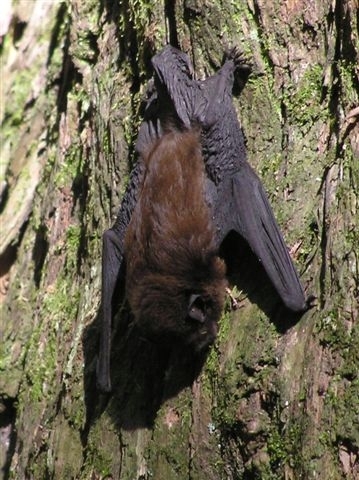Large colony of endangered South Island long-tailed bats found at D’Urville Island

Image by Department of Conservation
Forest & Bird is thrilled that a large colony of endangered South Island long-tailed bats has been discovered during a January survey on D’Urville Island, in the Marlborough Sounds.
The D’Urville population is estimated to number in the hundreds.
The colony was discovered by a Forest & Bird survey team during the fifth and final year of surveys, initiated by Forest & Bird Top of the South Field Officer Debs Martin, alongside bat scientist Dr Brian Lloyd.
“This find is fantastic news,” says Ms Martin. “It means that D’Urville Island is even more important to New Zealand’s natural heritage than we thought.”
Only 10 colonies of long-tailed bats are known to remain on the South Island mainland, with total numbers less than 5000 – and declining.
“D’Urville Island is the fifth largest island in New Zealand. One third of it is public conservation land. It is free of possums and ship rats, which increases the long-tailed bat’s chances of survival. Except for a small colony on Stewart Island, the D’Urville group is the only one known to be living on an offshore island. This find dramatically increases the chances of saving the species from extinction,” says Ms Martin. “It was predicted that the South Island long-tailed bat would become extinct within 50 years. But this find may well alter that.
“Our next step will be to work with the Department of Conservation, Ngati Koata and local landowners to monitor the bats and ensure the island remains a safe haven for these animals. Protecting the quality of the island’s remaining forests and not allowing any new predator species to establish themselves on the island is now vital.”
The D’Urville colony was found thanks to the late Colin Iles, whose estate funded the final year of bat surveys.
“Colin was a gentle and compassionate man who was keen to see that his bequest benefited conservation in New Zealand,” says Ms Martin. “This surely is a legacy to be proud of. We are ever grateful to Colin for his generosity.”
FACT: Last year Happyzine supported and showcased over 100 community groups by their good news with thousands of changemakers. Pay what you can afford to join Club Happyzine today.
One species of native bat – the greater short-tailed bat –became extinct in 1965 from predation by ship rats. Another species of short-tailed bat survives, but in low numbers. Forest & Bird surveys have failed to find any surviving populations of short-tailed bats at the top of the South Island, including in places where it is known historically to have lived.
For further information, contact Debs Martin: 027 684 0599
High quality audio files of calls made by the D’Urville Island bats, and high-res photos, are available by contacting Jay Harkness, Forest & Bird Communications and Media, on [email protected].
loading...
loading...
Tags: bats



Voices of our community